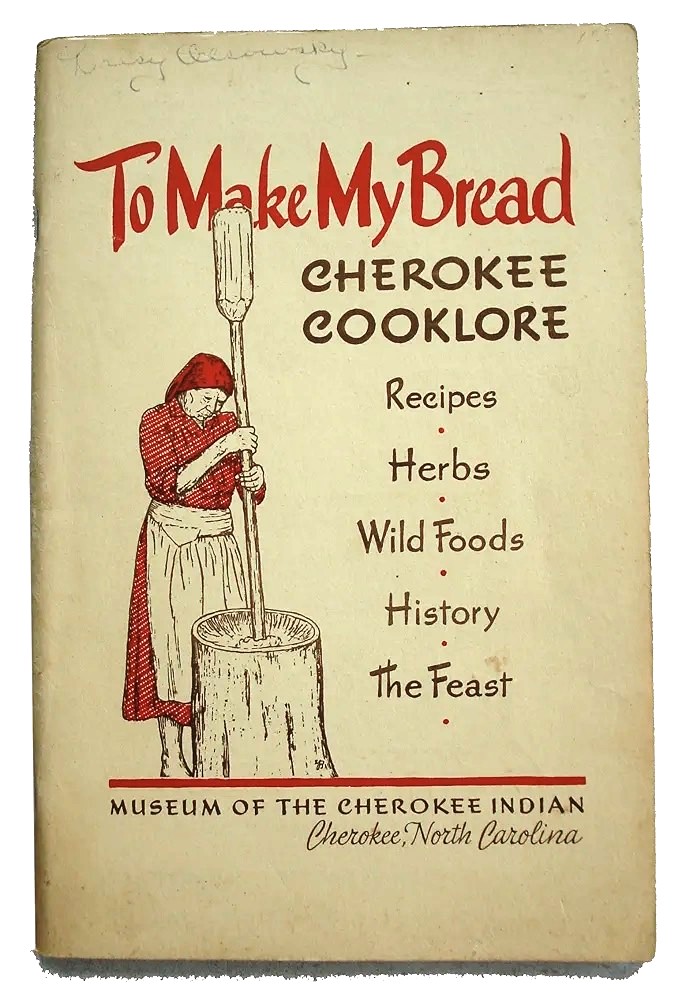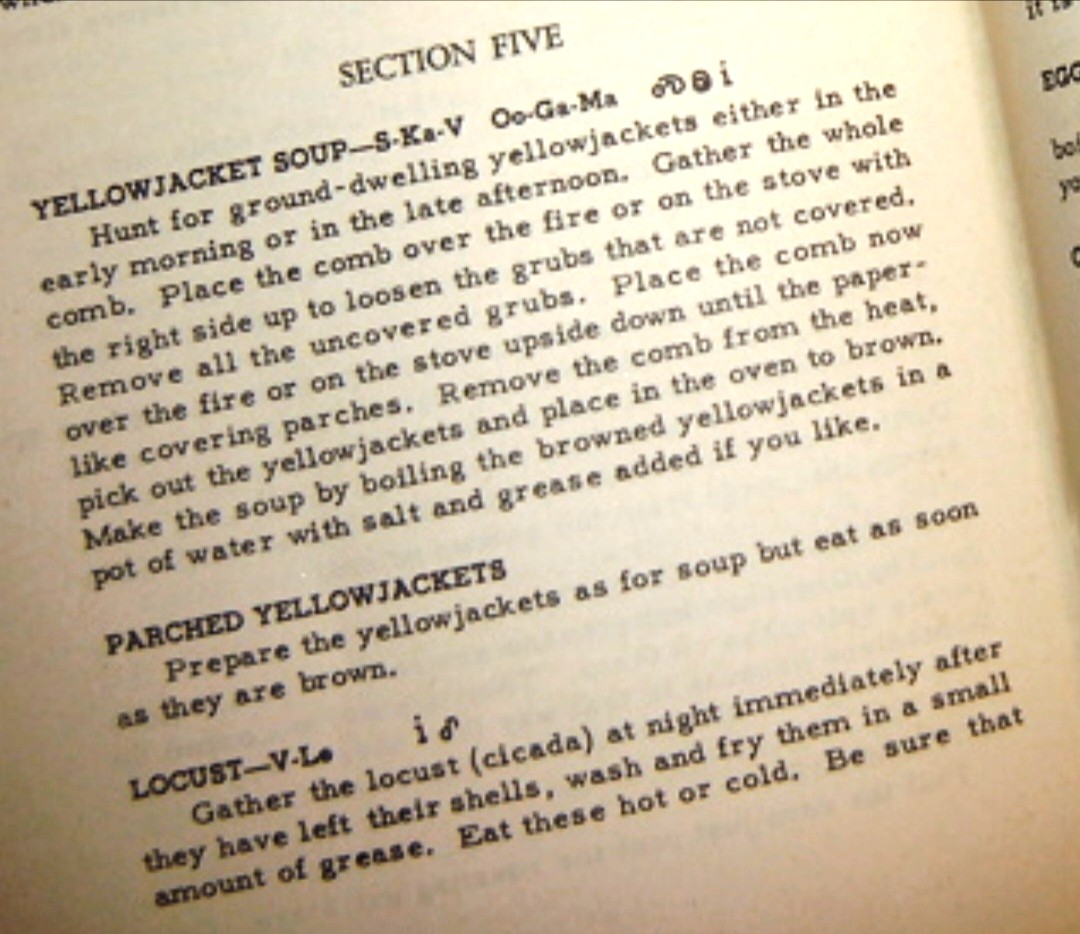Nearly ten years ago on Reddit, a user posted this recipe for Yellow Jacket Soup.
Yellow Jacket Soup – (OO-GA-MA)
Hunt for ground dwelling yellow jackets early in the morning or in the late afternoon. Gather the whole comb. Place the comb over the fire or on the stove with the right side up to loosen the grubs that are not covered. Remove all of the uncovered grubs. Place the comb over the fire or on the stove upside down until the paper-like covering parches. Remove the comb from the heat, pick out the yellow jackets and place in the oven to brown. Make the soup by boiling the browned yellow jackets in a pot of water with salt. Add grease if desired.
Simple enough. Bake the insects, then boil them with fat and… eat soup.
Apparently the recipe was actually found and posted to the web first by a Tiny Pine Press blog, from a 1951 cookbook they found in a shop.


Five years later in 2017, the idea showed up again on Twitter, and caught the eye of a chef “Barlowe”.
“You’re up to something, aren’t you?” I ask him. “Yellowjacket soup,” he says, smiling from ear to ear. … The idea sprouted by way of chef Sean Brock posting a centuries-old Cherokee recipe on Twitter. “I’m dying to try this,” Brock wrote.
The Twitter version of this story as published by Vice (which really was an Instagram post) goes on to erase not only Reddit and Tiny Pine as prior and better written sources than Brock, but also obliterates the cookbook too. Somehow it cites the book as Brock’s written source while saying it doesn’t count.
The recipe was last written down around 1860, and Barlowe took a quick interest in the idea of recreating it.
Such misinformation, the Web looked better in 2009 on that original Tiny Pine blog post.
Wasps for soup maybe sounds far fetched and ancient, given the Twitter misinformation treatment, yet the Japanese certainly still do it.
After we got a good pile going, Sayoko simmered the larvae in a pot with sugar, sake, chopped ginger, and soy sauce. That method of cooking is called tsukudani—people make all kinds of things that way… so much of wasp culture in Kushihara is centered on being in the present moment: in a certain place at a certain time. Wasps are, more than anything, a fleeting mark of the fall season. You spend months cultivating the nests just for that moment when you pop a raw larvae into your mouth and it bursts into a flash of honey butter.
…and also residents or tourists in Yunnan, China.
…we dipped them in water to wash them off, them placed them in a bowl together. Then, heating some oil, we deep fried them…. My Italian friend went a step further and sautéed them in butter with some sage.
And of course there’s science to support the nutritional value.
The high amounts of unsaturated fatty acids in the lipids of the hornets could be expected to exhibit nutritional benefits, including reducing cardiovascular disorders and inflammations. High minerals contents, especially micro minerals such as iron, zinc, and a high K/Na ratio in hornets could help mitigate mineral deficiencies among those of the population with inadequate nutrition.
The science certainly gets a shout out as well in Africa.
In Sub-Saharan Africa, edible insects with high consumption rates have been identified as beetles (31%), caterpillars (18%), bees, wasps and ants (14%) and grasshoppers, crickets and locusts (13%). Across the central Africa region, insects still provide more than 50% of dietary protein, and their commercial value is higher compared to animal-derived protein. This can be attributed to the superior nutritional profile of numerous insects coupled with the ease of insect production and the low carbon footprint associated with insect rearing.
Super interesting, really, why Americans aren’t more familiar with their own delicious variations like Yellow Jacket Soup.